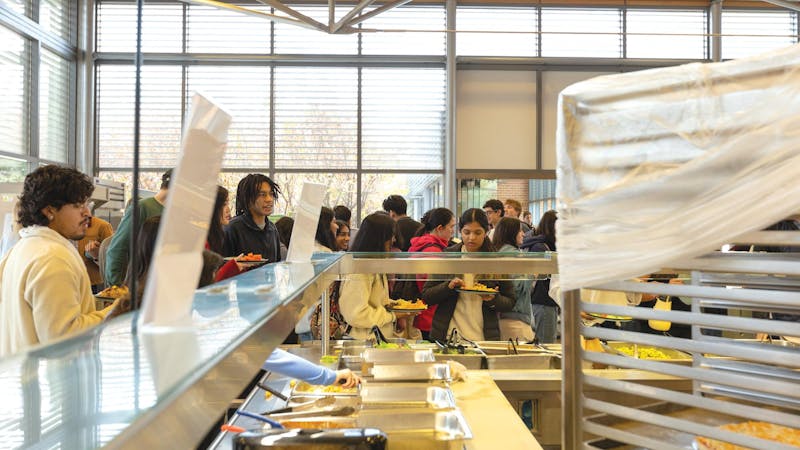King Tut's funerary trove on display at the MFAH
The Tutankhamun: The Golden King and the Great Pharaohs exhibition at the Museum of Fine Arts Houston must have all the other Egyptian pharaohs rolling in their sarcophagi. Despite efforts by King Tut's successors to erase his name from official coronation records, Tut has paradoxically attained the highest level of posthumous recognition of any pharaoh after the discovery of his relatively unlooted tomb in 1922. The Tut exhibition touched down in the MFAH last month on Oct. 16 and will grace the upper level of the Caroline Wiess Law building until ?April 15, 2012.
The fascination with Tut's early death, short boyhood reign and intact necropolis have established him as a pop-cultural icon. Tut has achieved the coveted eternal afterlife, as evidenced by eager Houstonians willing to pay up to $33, $29 for students on weekends, to view the gilded and stone art treasures of his tomb.
The exhibition begins in a low-lit introductory theatre. A less-than-two-minute introductory film, appropriately narrated by Indiana Jones star Harrison Ford, highlights key pharaohs whose artifacts are presented in the exhibition. Akin to a Disneyland attraction, the theater doors automatically open at the end of the film, revealing a panoramic photo of a Giza pyramid. The first six galleries of the exhibition highlight the lives and artistic likenesses of ancient ?Egyptian pharaohs.
For the past 3,000 years, 30 dynasties have controlled Egypt. From a larger-than-life bust of Ramesses II to a colossal statue of Amenhotep IV, the exhibition's wide range of artifacts are aptly representative of the dynastic eras. The selection of female-modeled statuary and sketches stray from the stereotypical representations of women as subservient homemakers. Curator David Silverman gains feminist points with his particular selection of 18th-dynasty "Kneeling Statue of Hatshepsut." Hatshepsut broke from the traditional norm to rule as queen and pharaoh.
The stone-carved reliefs of Egyptians processing and bowing in profile inevitably call forth the kitsch-classic tune "Walk Like an Egyptian" by the Bangles. The golden mask of Psusennes I, however, soberly reminds viewers of the functional reality of these artifacts. This gilded mask was found covering the head, chest and shoulders of Psusennes I's mummy as a symbolic means ?of protection.
The exhibition devotes the remaining six galleries to the headliner pharaoh, Tut. An archaeologist's canvas tent demarcates the transition to Tut's necropolis treasures. British archaeologist Howard Carter inadvertently stumbled upon Tut's tomb in the Valley of the Kings.
The layout of the Tut-only half of the exhibition, modeled after the chambers of the actual tomb, highlights Silverman's prowess as a curator. The artifacts, like the layout of the gallery rooms, correspond to their original chamber burial placements. The premier artifacts featured from the tomb are Tut's gold finger- and toe-protectors and a pair of golden sandals removed directly from the mummy's feet. Scarab amulet collars, semi-precious stone-inlaid diadems, and a simple wooden bed are all thought to have had functional significance while Tut was alive. Two other notable artifacts are a 10-foot-tall statue of Tut, which had been appropriated twice by pharaoh successors, and a caste-replica of the actual Tut mummy.
Although the Tut exhibition has garnered international acclaim since its debut in the 1970s, my stroll through the galleries was surprisingly underwhelming. Perhaps my expectations were unfairly high, but despite the over 100 artifacts on display, the variety of these artifacts is blatantly lacking. While plaques on the exhibition's walls tout Carter's discoveries of gilded chariots, intricately painted coffins and woven furniture, the exhibition seems to stage an overwhelming number of shabti statues, funerary figurine servants and coffinettes, the vessels that held Tut's organs.
What does make the Tut exhibition worthwhile, however, are the educational elements presented through the accompanying plaques for each artifact. The cartouches of the statues transmit one layer of historical background, while the curator's plaques provide a second layer of additional detail in the context of the rituals and symbolic motifs typical of the dynasties.
The exhibition, above all, benefits from its diverse use of multimedia presentations relating the artifacts to their original environments. Video presentations offer architectural tomb renderings, on-site archaeologist interviews and inside looks into scientists' genetic analyses conducted on mummies.
More from The Rice Thresher

Over 1,000 students petition against new meal plan
When Konstantin Savvon opened the Housing and Dining email announcing the new unlimited meal plan, he was instantly concerned about the impact on off-campus students like himself.

Rice football wins season opener under new coach
For the first time since 2018, Rice football opened its season with a victory. Scott Abell was soaked with yellow Powerade following a 14-12 win on the road Saturday against the University of Louisiana at Lafayette, which won 10 games and made it to the Sun Belt Conference championship last season.

Acting like an athlete: Rice basketball alum takes on Broadway
Underneath Chadd Alexander’s Broadway costume, there’s ankle tape and wrist braces — same protective gear he wore as a walk-on basketball player at Rice, though now he’s performing eight shows a week in the ensemble of “Harry Potter and the Cursed Child” instead of running conditioning drills in Tudor Fieldhouse.

Please note All comments are eligible for publication by The Rice Thresher.